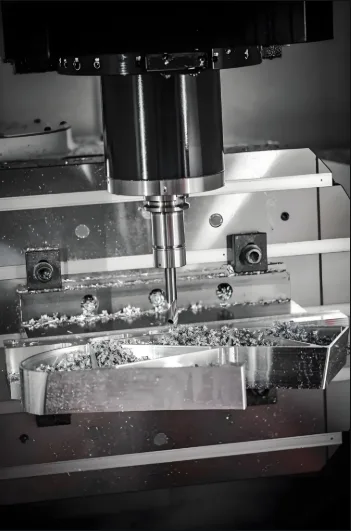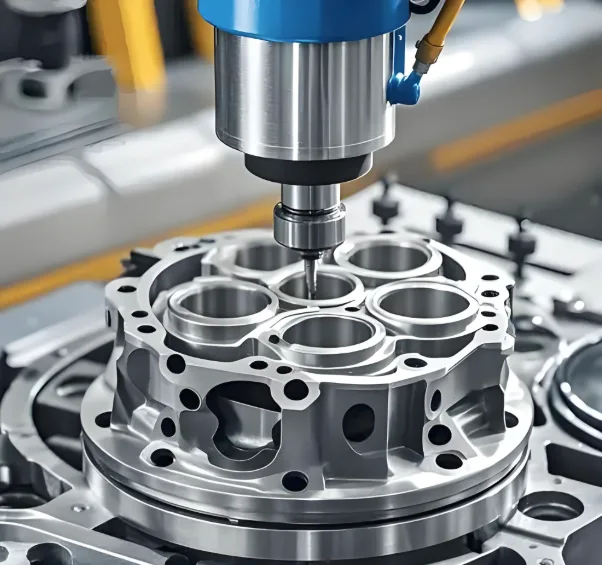Lathe Support Machining and Fixture Design Optimization
The machining of lathe supports is a complex process. The technological level and processing quality are critical for the final product. Success requires selecting and optimizing the process based on material properties, structural characteristics, and processing requirements. We must also scientifically design and use fixtures. This ensures quality results and improves production efficiency.
Fundamentals of Lathe Support Machining
The lathe support machining process involves several intricate stages. These include raw material preparation, rough machining, finishing, heat treatment, and inspection. Manufacturers must select the appropriate equipment and tools. They must also set precise cutting parameters. This achieves products that meet precise specifications, high accuracy, and efficiency.
Key Factors Affecting Machining and Fixture Design
Designers and manufacturers must thoroughly consider several factors. These factors influence the final product quality of lathe supports and fixtures. Considering these helps them avoid quality issues.
Factors Affecting Lathe Support Machining:
Raw Materials (Fundamental Factor): Raw materials fundamentally determine the final quality and processing efficiency. We must scientifically select materials with appropriate properties, like strength and corrosion resistance. We base this selection on the support’s actual needs.
Skill Level (Key Factor): Skill level is the key factor affecting machining accuracy. We can improve efficiency and reduce costs. We do this by optimizing the structural design (e.g., reducing weight to lower vibration) and optimizing the machining process (e.g., reducing wall thickness to lower cutting force).
Cost (Important Factor): Cost is another critical factor. Companies must comprehensively consider the costs of equipment, labor, and materials. Optimizing the process, saving raw materials, and boosting efficiency achieves effective cost control.
Personnel (Crucial Factor): The technical level and proficiency of personnel are essential for processing quality. Therefore, we must ensure all staff possess the necessary technical literacy and operational capabilities.

Recommendations for Improving Lathe Support Machining
As industrial technology advances, the quality and precision of lathe supports become crucial. They determine the performance of mechanical equipment. Mastering advanced machining and fixture design techniques provides a significant competitive advantage in a fiercely competitive market. This article will provide targeted recommendations for improvement.
Scientifically Optimize Processing Materials
To improve the machining process, optimizing raw material selection is foundational. We should select materials with high toughness and high wear resistance. We base this choice on the support’s operating environment and requirements. Furthermore, maximizing material utilization is essential for cost control. We do this by optimizing cutting ratios and implementing waste material management.
Improve Process Technology
Introducing and applying advanced technologies is key to elevating the process level. Companies should adopt technologies like CNC machining and laser cutting. These boost precision and efficiency. Regular, timely inspection and maintenance of processing equipment are equally vital. Ensuring excellent equipment performance, along with process optimization, is necessary. This achieves cost reduction and efficiency improvements.
Optimal Design of Fixture
The rationality of fixture design directly impacts the entire machining process.
We must optimize the fixture structure. This ensures stable clamping and easy operation for operators.
Designers should scientifically select components with high rigidity and high clamping force.
They must optimize the clamping method (e.g., multi-point or flexible clamping). This is based on the support structure and processing requirements.
Finally, they must confirm and adjust the force strength of the fixture. This maintains stability and precision.

Strengthening Personnel Technical Training
The effective application of technology fundamentally relies on people. Therefore, improving the comprehensive technical level of personnel is necessary. This advances both lathe support machining and fixture design.
Conclusion
Improving the machining process and fixture design for lathe supports is a systematic and complex undertaking. It requires companies to consider multiple angles. They must also foster a collaborative effort. After fully understanding its importance and considering all influencing factors, companies should implement precise policies. This will ensure the healthy and sustainable development of the machinery industry.
